Macro Setup Quickie
The concept of macro photography refers to the achievement of a picture with a magnification of the
subject of 1:1, that is, something 20mm wide (like a US penny) will occupy 20mm width of film (or in digital photography, light
detector). If one is using 35mm film, which is 24mm high and 36mm wide, then the penny will occupy roughly 35% of the image area,
yielding an image of said penny just about 3" diameter when printed to a typical 4x6" size. Keeping this in mind, it is easy to understand why a consumer digital camera (such as the Nikon Coolpix 900 series) seems to take such close-up "macro" shots: the light sensor of the Coolpix 995 is just over 5mm high and 7mm wide, so that a 28mm diameter object (like a watch movement) will "fill" the detector if taken at a magnification of 1:5, a long way from the 1:1 magnification of true macro photography. So, using a digital camera with a very small detector will allow one to more easily fill an image with a small object, and when displayed on a standard 72dpi computer monitor that 28mm movement might be 20" wide (depending upon the resolution of the monitor, of course)! The trade-off is that a small sensor means small pixel-detectors, and therby an increase in noise along with less detail and dynamic range. In the pictures below, I have used a Canon 10D digital SLR with a sensor size of 22.7 by 15.1mm, so the image area is roughly 40% that of standard 35mm film, and nearly 10 times that of a typical consumer digital camera.
Back to macro photography. The expectation when purchasing a macro lens for an interchangeable-lens camera is that it will meet 2 criteria not otherwise fulfilled: it will allow one to focus on an object so near the lens that it will appear at the film (or sensor) plane at the magnification of 1:1, and it will do so without significant degeneration of image quality or lens performance (such as loss of aperature or creation of reflective artifacts). Part of what one is paying for with a macro lens is the close-focus ability, and the other part is the sheer quality of design, material and assembly required to allow such. In most cases, this is just where it ends, and one can fill one's computer screen (or printed picture) with something of an area as small as 1.3 square inches (35mm film), .53 square inches (Canon 10D) or even .06 square inches (Nikon Coolpix 995). The following pictures were taken with Canon's unique 65mm macro lens, which starts by focusing down to 1:1, and continues all the way to 5:1! This is not an easy thing to accomplish (the lens has a huge extension, and apparently a lot of moving parts inside), nor is it easy to use because normally the end of the lens is placed within an inch or so of the subject. Lighting can be a significant issue, and the critical depth-of-field is often less than 1mm. Since this is not a zoom lens in an ordinary sense, the only way to focus it at a chosen magnification (such as 3:1) is by moving the camera back-and-forth with regard to the subject. This is tricky with that tiny DOF, so mine is mounted on a rail which allows the position to be adjusted so finely that one full turn of the knurled screw will move the camera about 1mm! The setup, camera and lens look like this:
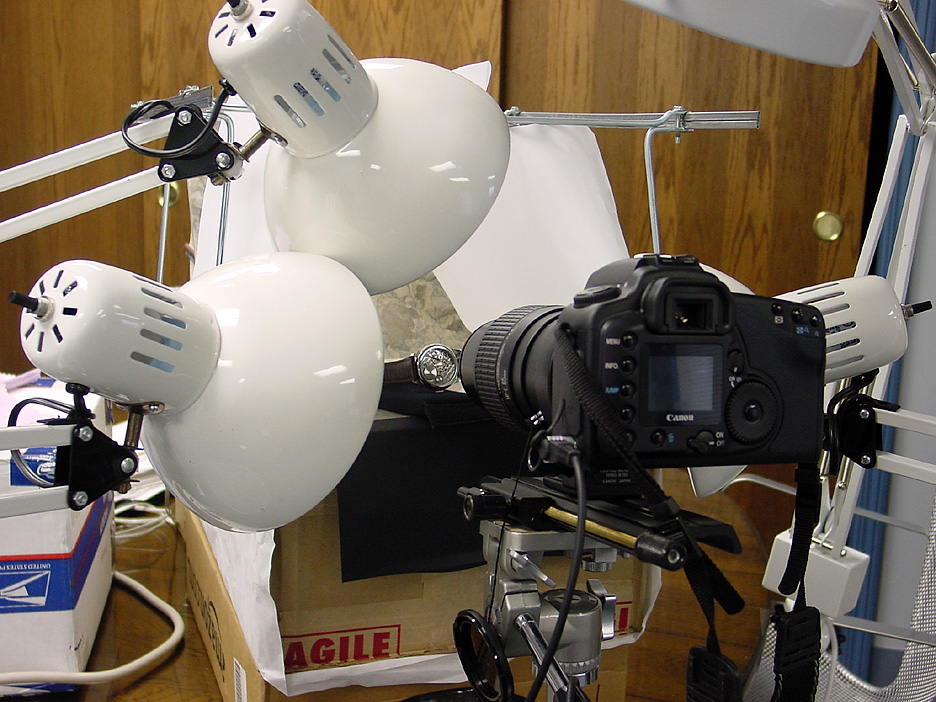
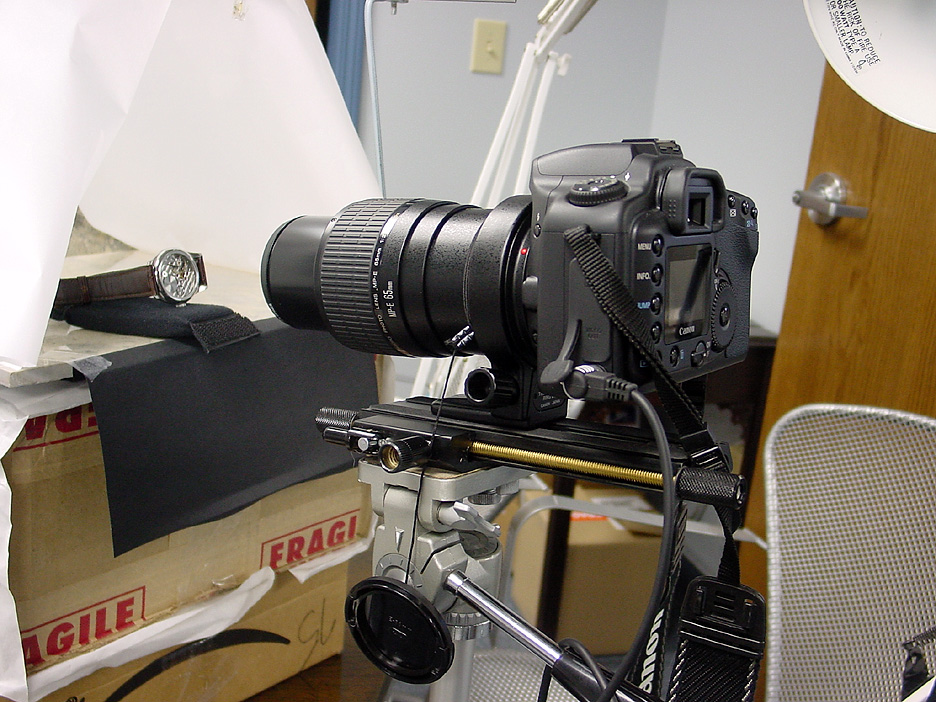
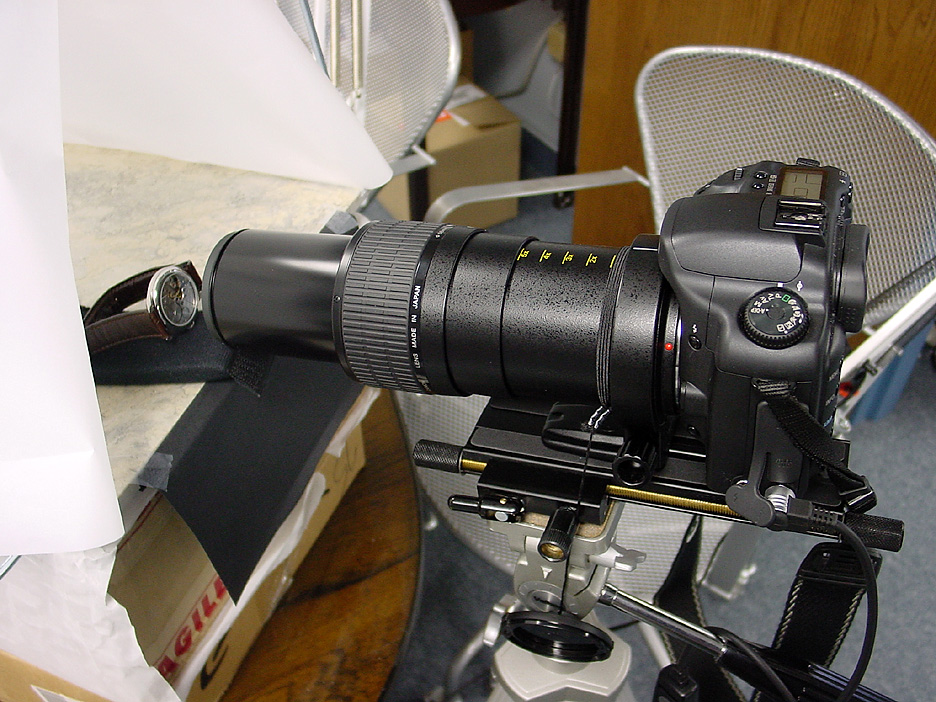
To illustrate what this sort of magnification means, I have created 3 pairs of pictures taken with this setup. In each pair, the first picture shows the full frame from the camera, but drastically reduced in size so that it will fit on a computer monitor. The second picture shows a 936-pixel-wide (13" at 72dpi) crop from each original, but at full size.
This first pair is at 1:1, maximum magnification with a traditional macro lens:
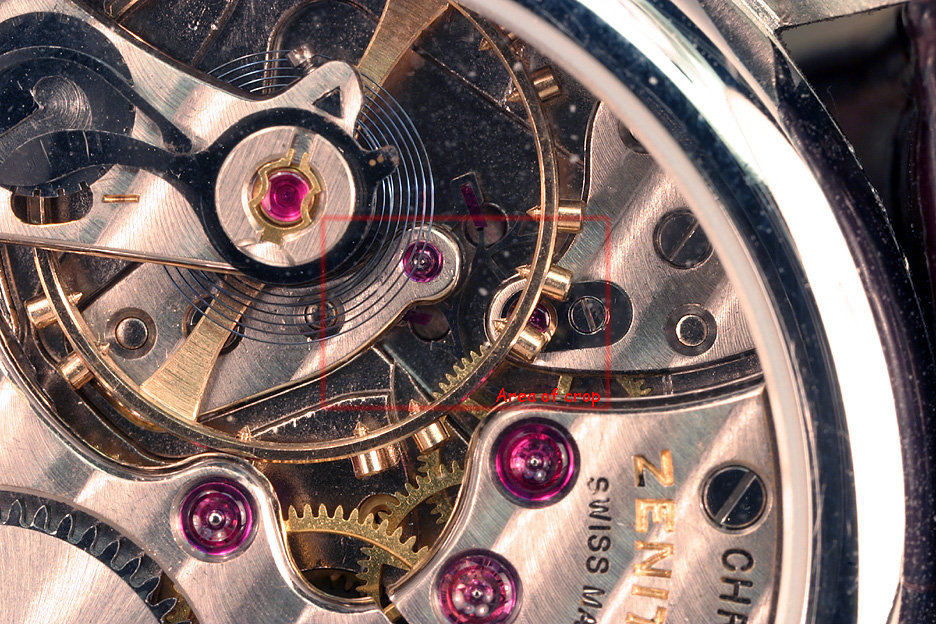
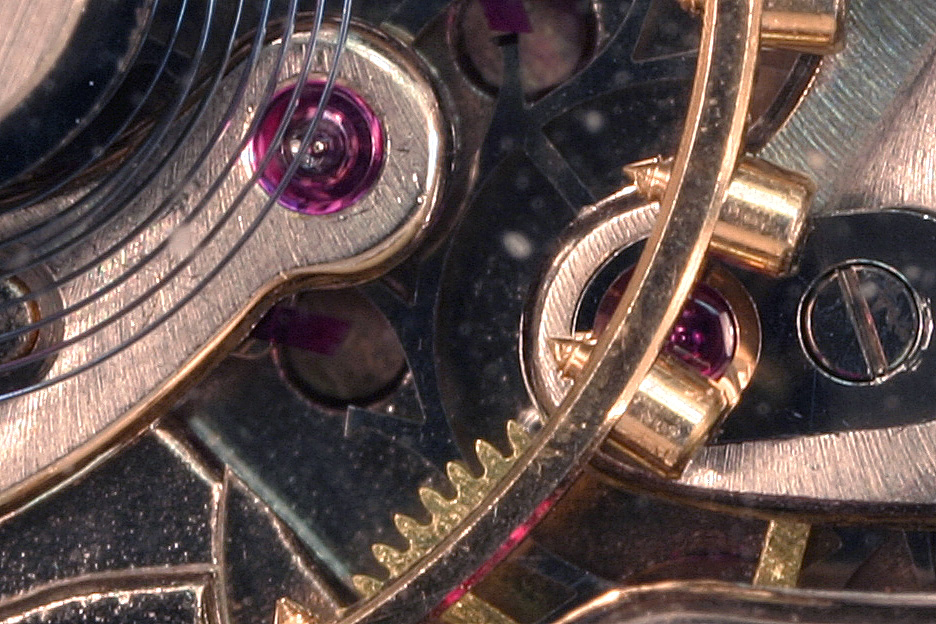
This pair is at 3:1:
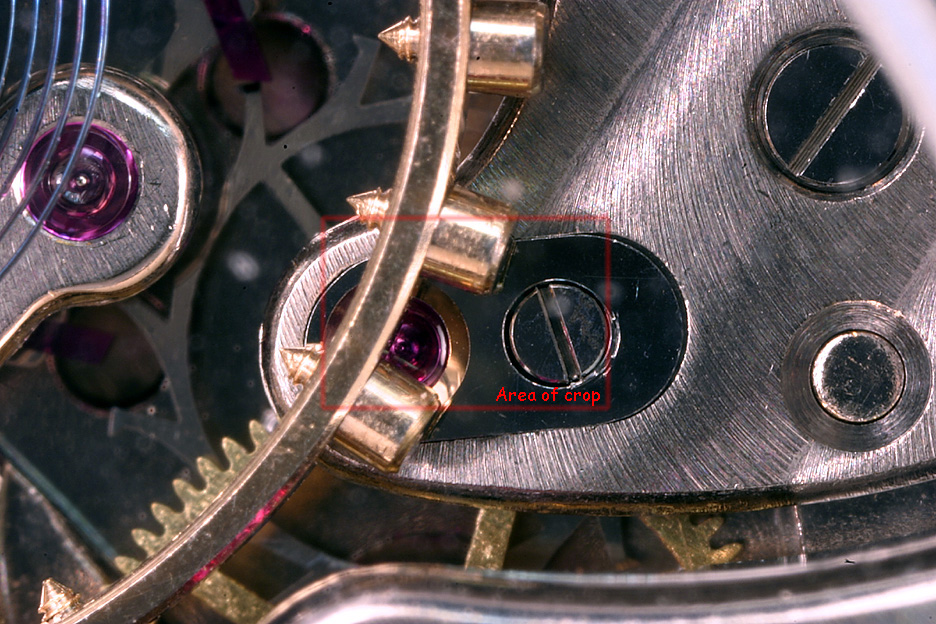
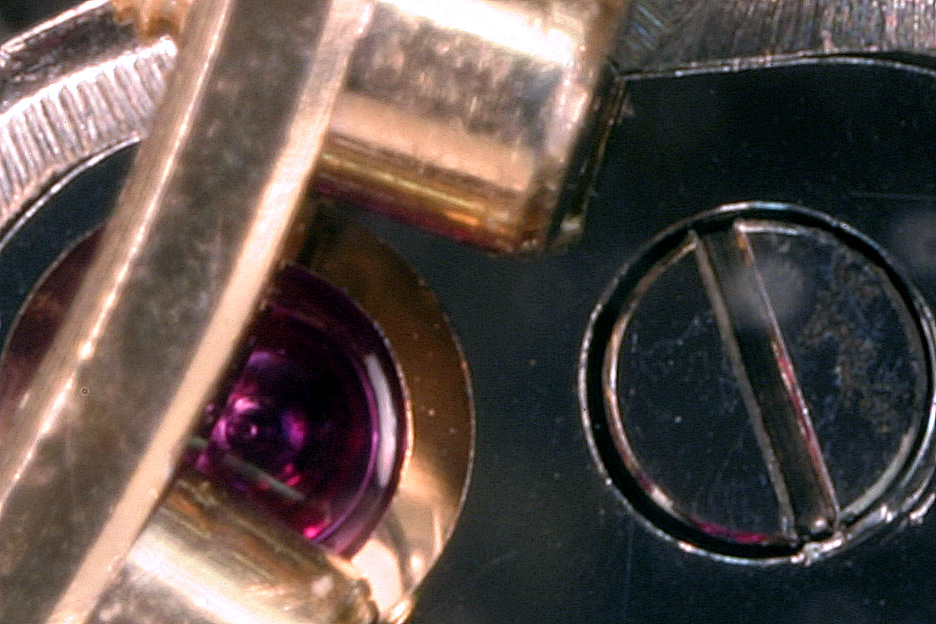
Finally, at 5:1 magnification:
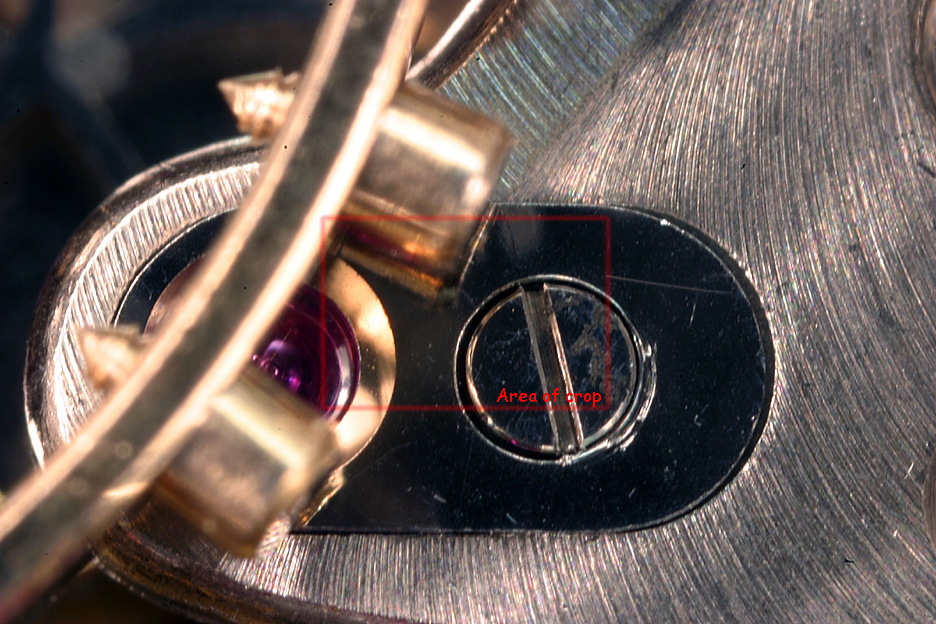
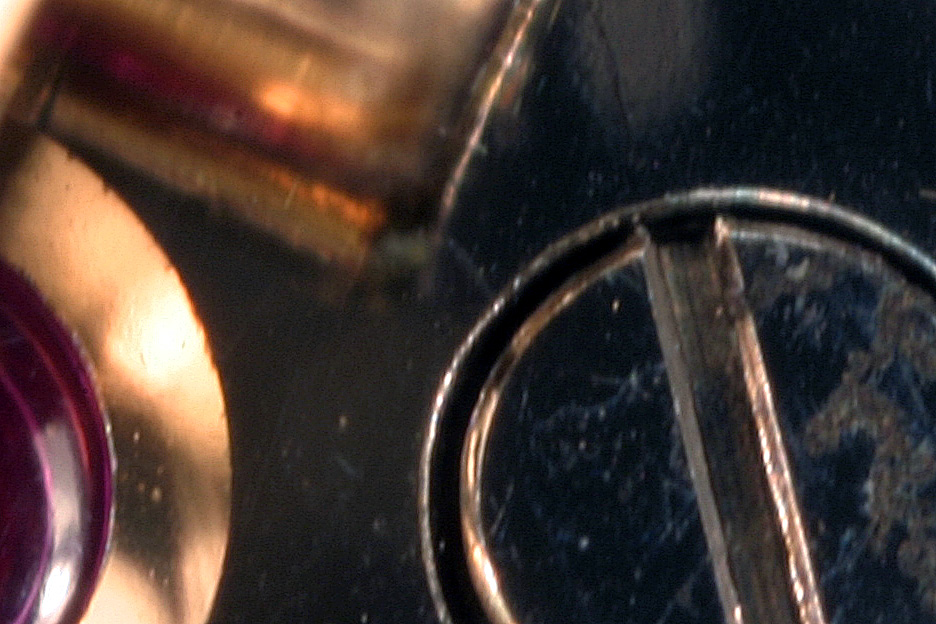
I hope you enjoyed this!
SteveG
steve@ninanet.net
December 3. 2003
All content Copyright asserted 2003











